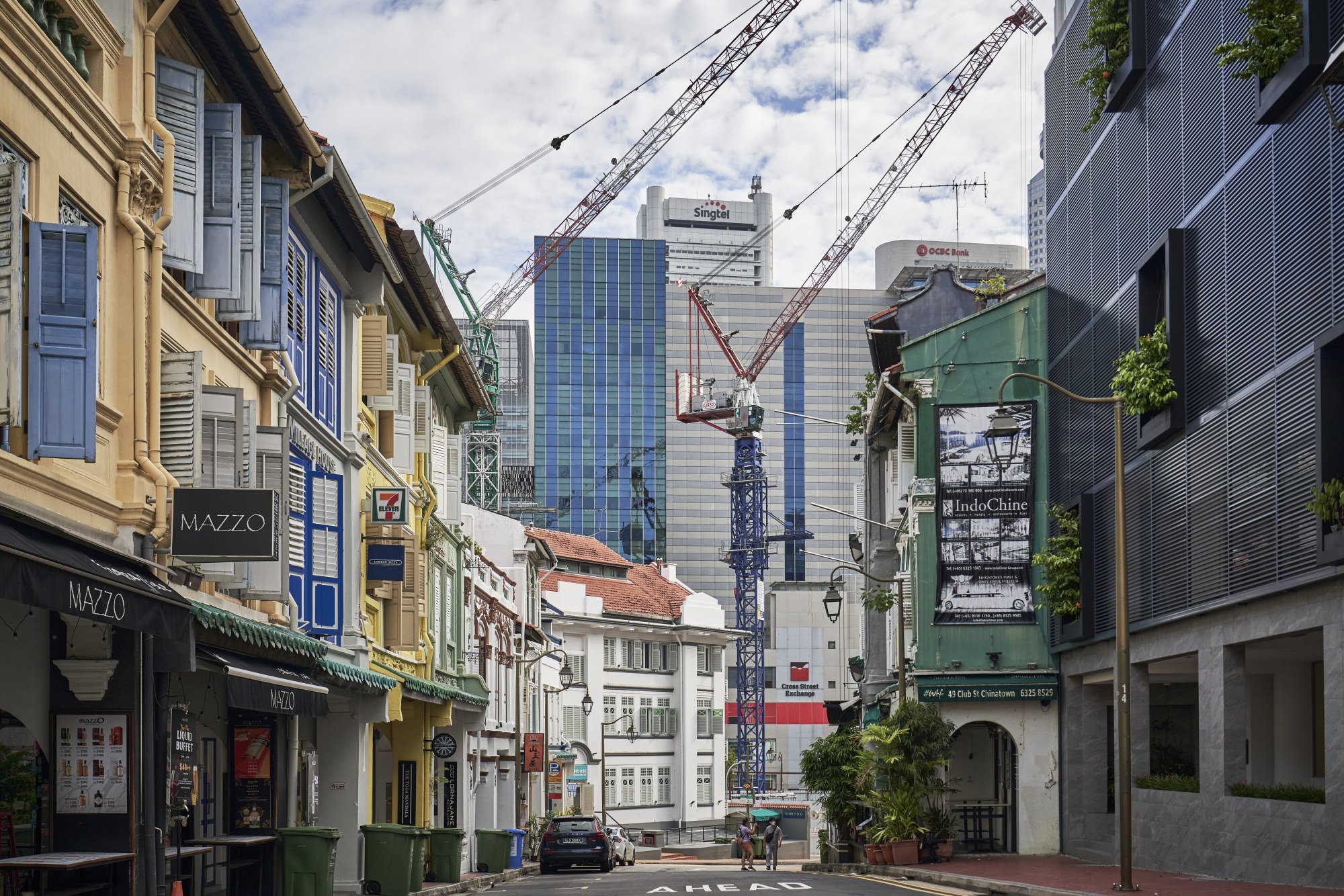
Cramped, mouldy, smelly: an expat’s hunt for a US$1,500 room in Singapore
- Su-Lin Tan checks out the rental scene in Singapore and discovers glossy photos on co-living websites do not always match expectations
- Landlords need to be careful not to exploit those looking for homes, and should offer transparent terms and suitable living conditions, she writes
Move over Hong Kong, Singapore is now Asia’s priciest city for private property
Monthly rents in Singapore also held the top spot in the Asia-Pacific at a median of US$2,598, trailed by Sydney houses at US$1,958 and Sydney apartments at US$1,732. Hong Kong ranked fourth with rents of US$1,686.
As a solo tenant myself, I recently looked at renting a co-living room or a shared room with a landlord.
I made a shortlist after looking at ads by international co-living providers such as Hmlet and local ones like Bespoke Habitat, as well as PropertyGuru, the local online real-estate advertiser. No billionaire, I figured it made sense to look at rooms in the S$1,600 to S$2,000 (US$1,190-US$1,485) range because beyond that – at about S$3,000 to S$3,500 – I could probably score a whole unit, albeit far away from the more popular areas such as near the Singapore river.
All in all, I reached out to seven co-living operators, spoke to about 20 agents on PropertyGuru, pestered friends to give up spare rooms, and inspected 12 rooms myself.
As my experience showed, those glossy photos couldn’t be further from reality – renters are best advised to look before they leap, unless of course you are paying top dollar.
The ‘bare bones’ room
One of my first inspections was a room with built-in wardrobes in a co-living unit at a condominium tower in Tanjong Pagar, downtown Singapore.
The agent – a self-employed businesswoman – told me two others lived in the unit. It had common space enough for one dining table and four chairs, next to the kitchen.
“Why was there a bit of shoddy paintwork outside the third bedroom?” I asked.
“It’s a partition job but it’s OK, the landlord does not mind,” the agent replied. “It’s advertised for S$1,900 [US$1,400] a month but we can put in an offer.”
The “third bedroom” was once the living room.
My subsequent inspections revealed that many units had been partitioned down to their bare bones – those bones being a walkway that would just fit a small standing kitchen table. That room went quickly later the same day, showing just how fast you have to be.

Room with a smell
I next saw a windowless room in the shopping district of Bugis. The co-living operator was upfront and warned it did not have natural light.
That wasn’t the biggest problem, as I soon found out.
The musty smell was a giveaway. An older apartment block joined to a shopping centre, the unit could do with a facelift.
There was a piece of yellowed paper placed over the floor trap cover in the kitchen, held to the ground with masking tape.
“What happened here?” I asked the agent, who was busy with his phone.
“Oh nothing, they just covered it,” he said, as a flurry of little moths appeared.
I do feel somewhat disappointed whenever someone seems to think that co-living companies … are somehow profiteering and taking advantage of renters in this market
The microwave was dirty and the fridge was jammed with food. The agent showed me another room that was just vacated but was a few hundred dollars more than the windowless room, which cost about S$1,500 a month.
Plastic bags, clothes, food containers and rubbish were strewn everywhere.
“Yeah, that’s what the cleaning fee is for, when you move out,” the agent said.
Homey – a known name in the co-living scene – later sent me a WhatsApp message saying if I wanted to view their units, I had to send them copies of my passport and work permit. “It’s company policy,” they said.
“But what about the millions of scams the government is warning people about? Surely it’s not safe and a breach of privacy to take copies of people’s official documents, when a contract hasn’t even been secured?” I asked.
“You can watermark them if you are scared,” was the response.
I did not get a reply when I tried to reach out to their senior management about this issue.
Transparency matters
Another well-known co-living operator Cove’s WhatsApp customer service consultant also responded after I made an inquiry, and offered an inspection of a room in the central River Valley area that was on a “flash sale” of S$1,650 a month.
The unit was clean, well managed and had good light – the only property I had seen so far that nearly resembled its online photos.
“I just want to let you know you can secure the S$1,650 for the term that you sign up for, after that it goes back to S$2,000 a month,” the agent said.
I exchanged glances with a fellow prospective renter who was also inspecting.
“Wait, so why hadn’t Cove told us this up front? For some of us, a long tenancy or S$2,000 rental might not be feasible,” I said.
“I will tell the head office,” the agent said.
Singapore’s ‘red-hot’ rents spur a co-living boom – and not just for expats
I reached out to Cove’s head of sales and marketing, asking why the company had not been upfront about flash sales. In the spirit of good civic-mindedness, it was important they give tenants accurate information, I said, because wasting time on one flat meant losing the chance to secure another.
He disagreed that Cove had not been forthcoming but said he would look into the matter.
“I speak to tenants and landlords every day in my job, personally as well, I am a renter, and so I can empathise with renters in this market,” he said.
“However, I do feel somewhat disappointed whenever someone seems to think that co-living companies or Cove are somehow profiteering and taking advantage of renters in this market.” He added that co-living operators did not have control over rents either, as they managed homes for landlords who ultimately made the decisions.

Mould and the livability standard
A few days later, I found myself on the doorsteps of yet another strange-smelling unit, this time in the central neighbourhood of Tiong Bahru.
It wasn’t moths this time, but mould.
Mould lined the ceiling of the living area of the first-floor older condominium unit. There was little light in the unit. On the way in, I saw another tenant with a grim look on his face.
“Why hadn’t the landlord cleaned this up? It doesn’t look very healthy,” I asked, pointing to the mould.
Is Singapore still a ‘tenant’s haven’ as rents rise, Hong Kong expats arrive?
“If the tenants are OK with it, the landlord won’t change anything,” the agent said.
I wrote to Singapore’s Urban Redevelopment Authority, which regulates rental contracts and guidelines for renting out, and asked if it had a “livability” standard – that is, landlords making sure homes were free of dangerous agents like mould and were functioning properly for occupation.
The URA spokeswoman I spoke to said they did not have such a standard, but pointed out they had many strict guidelines such as tenancy numbers in units.
As renting was a “private” matter between landlords and tenants, it was up to them to work out other arrangements such as partitioning or living conditions, she said.
You should totally report that
The problem with that is it would lead to the horse having bolted. Some tenants may sign up without being aware of health dangers, therefore causing a vicious circle with the landlord continuing his or her negligence.
I told the URA lady that evidence showed more enforcement was needed and added I was also getting private ads offering me a co-living room in a “12-room unit”.
“You should totally report that,” she said.
I could, but in the meantime, there would be many renters who may just throw in the towel and decide to live with 11 other strangers.
Subdivide and conquer: Singapore’s property investors cash in on co-living craze
But it’s not all gloomy. I saw great rooms in Mattar and Farrer Park and other areas where the usual logic applies – the higher the rent, the better the quality of rental rooms.
In short, if you can stump up about S$2,500 a month for a room, things are looking up. Homes a bit further out from the upmarket and downtown areas were definitely more affordable while decent.
Many are in new condo units that come with wonderful facilities like pools, gyms and spa pods, although many are partitioned and packed with tenants.
Some are in renovated historical shophouses while others are in great neighbourhoods that would be too expensive to access if only whole units were available.

I also saw some decent rooms in HDB flats with live-in landlords. But they came with a set of other rules: “No visitors”, “females only”, “no cooking”, or “light cooking only; no use of the oven”.
Of course, despite the photo mismatch, many people will probably find these rooms to be a perfect fit.
At a time in the market when tenants are vulnerable, this flat hunt has shown that landlords need to be careful not to exploit those looking for homes. Instead, they should offer transparent terms and suitable living conditions.
Even if partitioning homes for “co-living” spaces are legal, landlords ought to consider what is reasonable – is partitioning a unit to the point there are no common areas a good way to foster a happy household, and encourage tenants to stay on?
‘They’re so unaware’: Singapore’s priced-out young singles rail against the PAP over property
When landlords hold the upper hand, it might be time for regulators to consider beyond the enforcement of “on-paper standards” such as tenancy agreements.
There might also need to be “livability” standards – common in many housing markets around the world – to ensure landlords offer habitable rentals, including being free from pests and mould.
While my experience was by no means the norm, it also served as a sobering reminder that more effort is required to ensure such standards are enforced.
Fortunately, all’s well that ends well, and I did find a new home, sharing a place with a friend.
Additional reporting by Reuters

